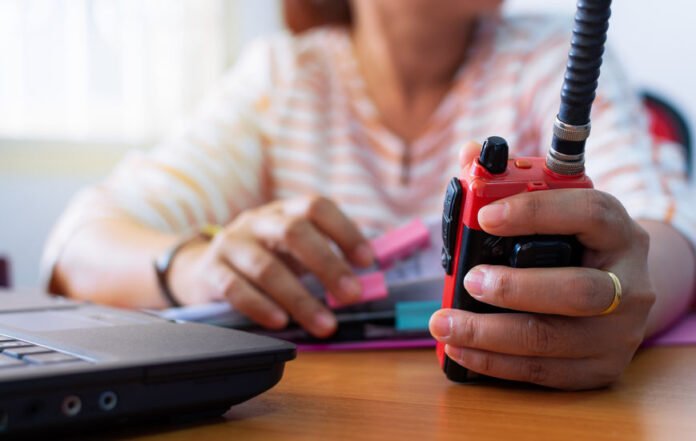Ham walkie-talkies are two-way radios that were initially designed for communication in amateur radio, public safety, and military applications using frequencies designated by the International Telecommunication Union (ITU) as within the shortwave band; these are frequencies at or above 10 MHz (10 meters). They also may include land, mobile, and marine communications throughout the HF band and VHF airband transmissions between 135 and 175 MHz.
Everything you should know about two-way radio basics
Whether you’re using a radio at work or home, whether you’re planning on buying or renting them, or if you want to know what all of those functions are on your Ham two way radios, you must understand everything there is about these devices. To decide which two way radios you should use. And how they can benefit your team and family in general; some factors should be considered first.
What to look for in your walkie talkies
Deciding on a walkie-talkie can be difficult, as many options are out there. Here are some things you should consider when choosing yours.
1) Range
The range is probably one of your biggest concerns regarding purchasing your two-way radios. The range refers to how far away from each other you and your partner will be able to communicate with your walkie talkies.
2) Battery Life
Battery life is meaningful because nobody wants their batteries dying in the middle of a meaningful conversation!
3) Price
Price is always an essential factor in deciding what products we purchase; it’s no different with walkie-talkies!
4) Features
Features such as weather channels or digital display screens might not be that important to you, but they could make a difference to someone else.
5) Size/Weight
Some people prefer smaller walkie-talkies, while others like larger ones. It all depends on personal preference!
6) Brand Name/Price Range
There are many brands of walkie-talkies available today, so try not to let the brand name dictate which two-way radio you buy.
7) Comfort
Your walkie-talkies need to be comfortable for you to wear if you plan on using them for long periods.
8) Extras
Extras such as chargers, headsets, or cases may seem unnecessary, but these accessories may come in handy later down the road.
Which walkie talkie is best for you?
You have to look at specific walkie talkies available for your industry to answer this question. If they are available, then go for that. Suppose you are from the school industry, then you have to buy specific walkie talkies for school. You can get the latest featured as per the school’s needs.
How to determine how many channels do you need?
If you’re buying walkie-talkies, make sure they are compatible with your favorite devices. For example, if you have an iPhone, there’s a good chance that any Ham walkie talkies that you buy will need an adapter to connect. Therefore, it is important to know how many channels of communication each model has and what kinds of adapters work with it. Make sure all users have walkie-talkies capable of communicating on one channel at a time.
How do I know what wattage is, right?
Choosing a two way radio with a wattage that exceeds your needs means you’ll be paying more money than necessary. These additional watts might give you better range, but they can also drain your battery at a faster rate. If your radio’s advertised as being able to go 500 miles, it likely won’t ever go even 100. It would be best to have enough wattage and battery life only for what you need.
Other things you may want to consider:
If you plan to use your walkie-talkies in a lifesaving situation, you might want to invest in something other than a toy. These units will have more power and volume, but they can also be costly. A good rule of thumb is that if you think you might use them in a stressful or dangerous situation (e.g., search and rescue), spending extra on better quality models may be worth it.

